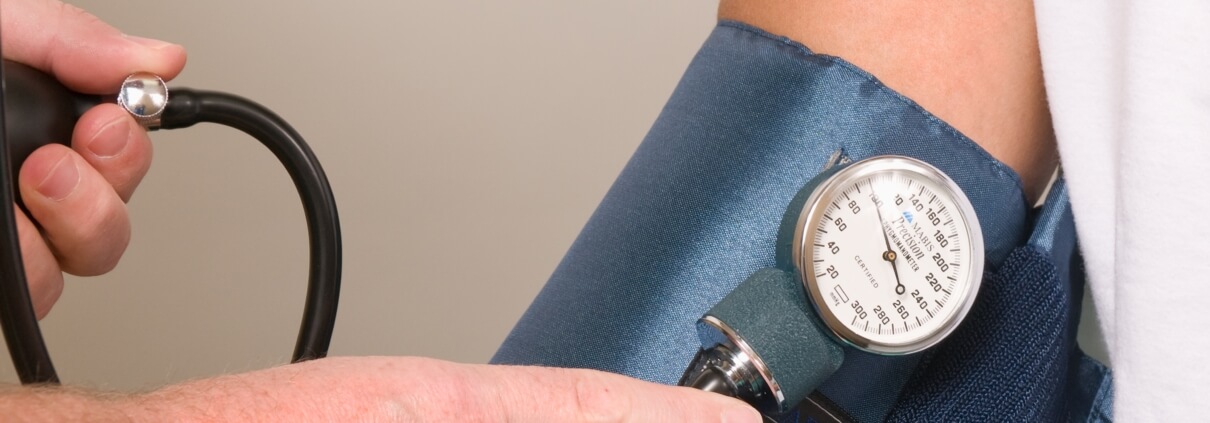The impact of blood pressure, salt, and potassium in the aging U.S. population
High blood pressure is an urgent health issue that poses a particular risk for our aging population. Why is it so prevalent, and what role does our diet – particularly our intake of sodium and potassium – play? Let’s explore.
Blood pressure concerns in the aging population

In the United States, high blood pressure, also known as hypertension, is a significant health concern, particularly among older adults. About half of American adults have hypertension, and these rates escalate with age—over two-thirds of adults aged 60 years or older have high blood pressure1.
This ‘silent killer’ often presents no clear symptoms but can lead to severe complications like heart disease and stroke, which are among the leading causes of death in the US2. The high prevalence of hypertension among older adults in the US may be attributed to several factors, including lifestyle habits and diet, particularly high sodium intake.
Salty subject: Sodium, processed foods, and blood pressure

Let’s move on to the role of sodium, a major component of table salt, in blood pressure.
Sodium is vital in maintaining fluid balance in our bodies, but a high-sodium diet can cause water retention, raising blood pressure, and straining our heart and other vital organs3.
A significant culprit of high sodium intake in the Western diet is processed foods. From canned soups and microwave meals to bread and fast foods, processed foods are often loaded with added salt. Studies, like the DASH study, found that reducing sodium intake, often by cutting back on these types of foods, could significantly reduce blood pressure4.
Potassium salt: A viable alternative?
Now let’s examine potassium salt. Just as processed foods are typically high in sodium, they often lack sufficient potassium.
Potassium, an essential mineral, helps to balance out sodium in our bodies. A diet rich in potassium can help lower blood pressure by balancing out the high sodium levels typical of many Western diets5.
Potassium salt, which is a blend of potassium chloride and a small amount of regular salt (sodium chloride), can be used as a direct substitute for table salt. Research has found that using potassium salt can help to lower blood pressure by increasing potassium intake and reducing sodium intake6.
What’s more, potassium salt tastes almost identical to regular salt. For those who can perceive a slight taste difference, there are blends available that combine regular and potassium salts to ensure the taste remains familiar.
Take action
The prevalence of high blood pressure, particularly among older adults in the US, is significantly influenced by the high sodium and low potassium content of our diets, largely driven by the consumption of processed foods. Lowering sodium intake and increasing potassium can be a beneficial strategy for managing blood pressure, with potassium salt presenting a simple dietary modification with potential health benefits. Always consult your healthcare provider before making any major dietary changes.
Stay healthy, stay informed, and keep seeking good health!
References:
- Virani SS, Alonso A, Benjamin EJ, et al. Heart disease and stroke statistics—2020 update: a report from the American Heart Association. Circulation. 2020;141(9):e139-e596.
- Centers for Disease Control and Prevention (CDC). Underlying Cause of Death, 1999–2020. CDC WONDER Online Database. Atlanta, GA: Centers for Disease Control and Prevention; 2020.
- Strazzullo P, D’Elia L, Kandala NB, Cappuccio FP. Salt intake, stroke, and cardiovascular disease: meta-analysis of prospective studies. BMJ. 2009;339:b4567.
- Sacks FM, Svetkey LP, Vollmer WM, et al. Effects on blood pressure of reduced dietary sodium and the Dietary Approaches to Stop Hypertension (DASH) diet. DASH-Sodium Collaborative Research Group. N Engl J Med. 2001;344(1):3-10.
- National Institutes of Health, Office of Dietary Supplements – Potassium.
- Binia A, Jaeger J, Hu Y, Singh A, Zimmermann D. Daily potassium intake and sodium-to-potassium ratio in the reduction of blood pressure: a meta-analysis of randomized controlled trials. J Hypertens. 2015;33(8):1509-20.




Leave a Reply
Want to join the discussion?Feel free to contribute!